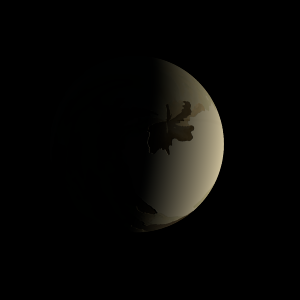|
|
Space Astro
|
Info for exoplanet "Gipyosha Fu"
| Scientific (actual) data |
|---|
| Name | Kepler-542 b |
| Planet status | Confirmed |
| Radius | 0.14 |
| Orbital period | 13.145 |
| Discovered | 2016 |
| Updated | 2021-02-05 |
| Tconj | 2455010 |
| Publication | Announced on a website |
| Detection type | Primary Transit |
| Alternate names | 2MASS J19285162+3832549 b, K00385.01, KIC 3446746 b, KOI-385 b, KOI-385.01, WISE J192851.60+383254.8 b |
| Star name | Kepler-542 |
| Right ascension | 292.22° |
| Declination | 38.55° |
| Mag j | 12.21 |
| Mag h | 11.854 |
| Mag k | 11.783 |
| Star distance | 439 |
| Star metallicity | 0.02 |
| Star mass | 0.93 |
| Star radius | 0.9 |
| Star age | 4.57 |
| Star temperature | 5526 |
| Star alternate names | 2MASS J19285162+3832549, KIC 3446746, KOI-385, WISE J192851.60+383254.8 |
| Wikipedia article | Kepler-542 b |
Back
| |
| Fictional info (?) |
|---|
| Suggested name | Gipyosha Fu |
| Planet type | Cold planet |
|
| Atmosphere | Nitrogen | 85% |
| Hydrogen deuteride (HD) | 15% |
| Atmospheric pressure | 0.6 bar |
 |
| Moon | Gyapyo-semo Nyu | Large round oceanic planetoid |
| Pyake-kese | Small round oceanic moon |
| Google search for Gipyosha fu |
|
Website by Joachim Michaelis
|
|
|
|